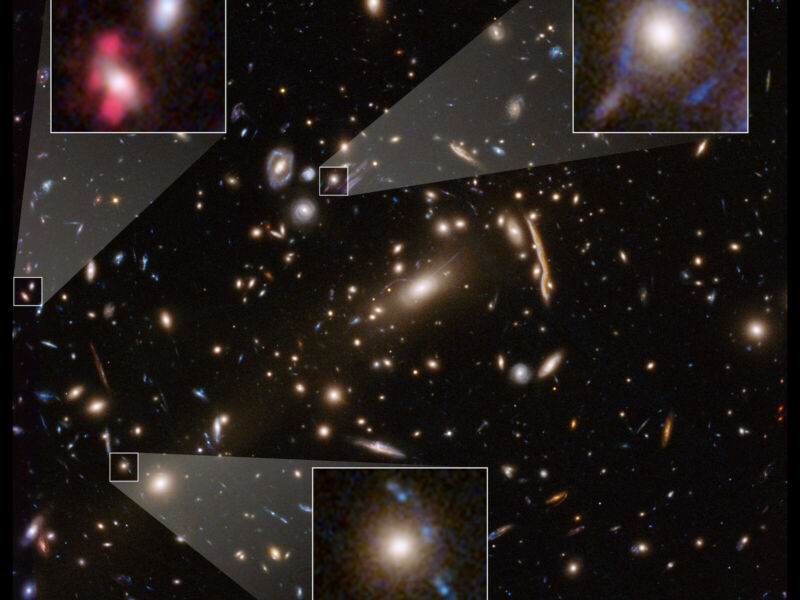New gravitational-lensing study hints at problems for dark matter models

Enlarge / The massive galaxy cluster MACSJ 1206. Embedded within the cluster are the distorted images of distant background galaxies, seen as arcs and smeared features. (credit: NASA, ESA, G. Caminha, M. Meneghetti, P. Natarajan, and the CLASH team.)
While the idea of dark matter was originally proposed to explain the structure of galaxies, one of its great successes was explaining the nature of the Universe itself. Features of the Cosmic Microwave Background can be explained by the presence of dark matter. And models of the early Universe produce galaxies and galaxy clusters by building on structures formed by dark matter. The fact that these models get the big picture so right has been a strong argument in their favor.
But a new study suggests that the same models get the details wrong-by an entire order of magnitude. The people behind the study suggest that either there's something wrong with the models, or our understanding of dark matter may need an adjustment.
Under a lensThe new study, performed by an international team of researchers, took advantage of a phenomenon called gravitational lensing. Gravity warps space itself, and it can do so in a way that bends light, analogous to a lens. If a massive object-say, a galaxy-sits between us and a distant object, it can create a gravitational lens that magnifies or distorts the distant object. Depending on the precise details of how the objects are arranged, the results can be anything from a simple magnification to circular rings or having the object appear multiple times.
Read 12 remaining paragraphs | Comments